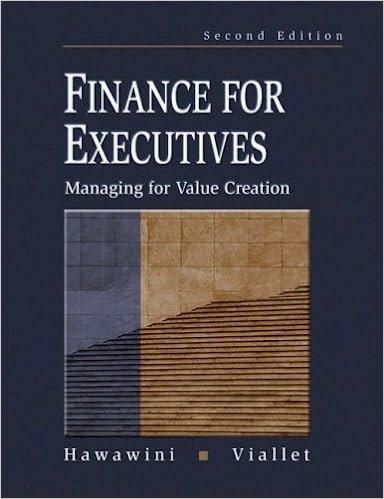Answered step by step
Verified Expert Solution
Question
1 Approved Answer
( In Thousands, except weekly sales ) Store # 3 0 0 Corner of Big StreGrocery MiniCase: To Invest or Not? Grocery Store Inc. (
In Thousands, except weekly sales
Store #
Corner of Big StreGrocery MiniCase: To Invest or Not?
Grocery Store Inc. GSI spends a great deal of money on capital expenditures, which
includes new stores, store remodels, warehouses and technology. You are in charge of
analyzing whether GSI should invest a significant amount of money into building and
operating a new store. The Controller of GSI, Ben Thair, has provided you with the
attached spreadsheet with partially completed information for a potential new store
located in Las Vegas, Nevada. In the Las Vegas market, Grocery Store Inc has a
market share. With such a high market share any new store in this market will have some
negative impact on existing store sales. Information on this issue and some others has
been provided by a consultant, Dunn Thatt, who was hired by the President of GSIs Las
Vegas division, and was paid $ for his consultant report.
In addition to the information on the attached spreadsheet, the following assumptions
should be considered:
Discount Rate. GSI has estimated their weighted average cost of capital WACC at
This rate should be assumed as a given for the project.
The decision to invest or not invest will consider NPV and IRR.
The income tax rate is Additionally, the city of Las Vegas has agreed to annual
property taxes at the flat rate of $ per year, not growing.
Project life. The store is estimated to last years.
Depreciation. Depreciation for fixtures and equipment is year MACRS. My lecture
notes have the percent depreciation per year or you can get the yearly amounts via an
online search. For the building, use a year straightline method for depreciation.
The investment listed on the accompanying spreadsheet includes land not
depreciated building, fixtures, cash in the registers, and for corporate cash
holdings and inventory. The latter two, cash and inventory, are working capital
items. Working capital needs are estimated to grow at per year.
Sales. The company CFO just paid a consultant $ who analyzed sales for retail
food and drug chains. The study suggested the normal growth pattern for new stores
was that sales grew at for years to at which time growth will slow to for
years to the next five years Thereafter years to sales were to remain
flat and should not grow at all.
Expenses. Some of the expenses are fixed and are assumed to not increase or
decrease over the next years. There are many expenses that are a percentage of
sales. They are highlighted in pink on the attached information.
New Fixtures. New fixtures will need to be replaced at the th year. It is estimated
that the cost to replace the fixtures and equipment will not increase as there will be
new technology in the material used to build the fixtures.
Existing Store impact. There is an existing GSI store located ten miles from this
proposed new store. The consultant just reviewed the history with this type of
situation and determined that the new store will reduce sales revenues by $
per year not growing at the existing store for all of the years while there will be
no offsetting negative impact on existing stores costs. Thus, they lose a net $
annually at the old store if they open the new store.
Corporate Overhead. The CFO and Chief Accountant both believe that new projects
should include an additional annual charge of of sales to cover the corporate
headquarter building fees and staff operating costs for headquarters.
It is estimated by the CFO that the salvage value at the th year for the building and
land will be $ million.
Management has set the following investment rules as guidelines to approve projects:
NPV Positive
IRR using expected return or WACC
This assignment has two parts that will be graded. The third part is good practice for
WACC computations.
Part One. Analyze the information and assumptions as given. Should GSI invest in this
project? Please justify your answer. Which investment rulerules are more important and
why? Please include a copy of your narrative along with your detailed Excel model. The
formatappearance should be something you would hand to your board of directors but
can be bullet point in nature and not extremely verbose.
Part Two. Revise the assumptions based on potential changes to the projected numbers
and assumptions. For example, if you change the salvage value amount does it change the
answer? What itemsassumptions matter enough to change your answer in Part One and
which ones dont You dont have to go crazy on this with tons of iterations but please
do find one or two items that would be material for the NPV This is in practice what
finance decision makers tend to want to know when asked to approve any project with a
positive NPV or when asking why a particular project does not have a positive NPV
Be sure to include all of your models supporting

Step by Step Solution
There are 3 Steps involved in it
Step: 1

Get Instant Access to Expert-Tailored Solutions
See step-by-step solutions with expert insights and AI powered tools for academic success
Step: 2

Step: 3

Ace Your Homework with AI
Get the answers you need in no time with our AI-driven, step-by-step assistance
Get Started


